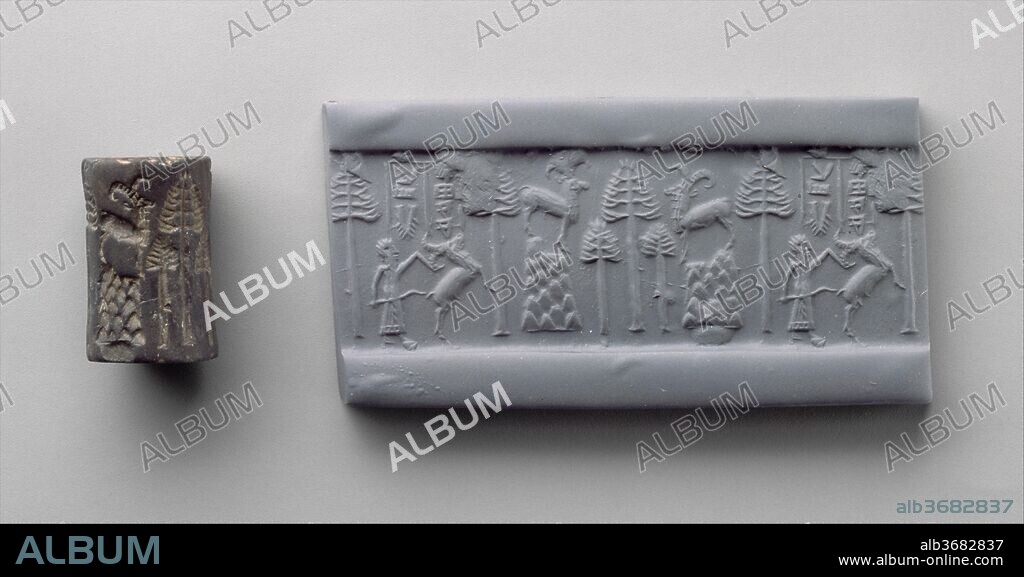alb3682837
Cylinder seal and modern impression: hunting scene

|
Add to another lightbox |
|
Add to another lightbox |



Title:
Cylinder seal and modern impression: hunting scene
Caption:
Cylinder seal and modern impression: hunting scene. Culture: Akkadian. Dimensions: H. 1 1/8 in. (2.8 cm). Date: ca. 2250-2150 B.C..
In ancient Mesopotamia, a cylinder-shaped seal could be rolled on a variety of objects made of clay. When seals were impressed on tablets or tablet cases the seal impressions served to identify the authority responsible for what was written in the documents, much as a signature does today. When seals were impressed on sealings -- lumps of clay that were used to secure doors and the lids of storage jars-- the seal impressions served to identify their owner and protect against unauthorized opening. Many cylinder seals have survived because they were made of durable materials, particularly stone, but also metal and fired clay. Perforated through the middle like a bead, seals were also believed to have apotropaic, or protective, functions and were worn as jewelry or pinned on garments.
The modern impression of a seal is shown here so that the entire design can be seen. The scene is composed of two basic groupings that form an overall continuous design unified by the stylized landscape setting. In one group, two tall trees flank a hunter grasping an ibex. Above the man a cuneiform inscription gives the name of the seal owner, Balu-ili, who was a court official, and his profession, cupbearer. In the other group, ibexes stand on mountains, facing each other and flanking three trees. This seal was made during the Akkadian period, when the iconography used by the seal engraver expanded to include a variety of new mythological, thematic, and narrative subjects. Here, the already ancient motif of the hunt is given a new setting in a clearly defined landscape. If there was a relationship between this imagery and the inscribed text, its meaning is no longer understood.
Sacred and secular ideas, fundamental to the beliefs of ancient Mesopotamian peoples, were visualized in the miniature images carved on the seals. The carver used intaglio, a technique in which the forms were cut into the stone, to create the raised impression. The challenge of the seal carver was to create a design that would maintain its balance and clarity when rolled out only half its length on a small surface or twice its length on a larger surface. On the left and right edges of the impression one can see how the rolled out design begins to repeat. Unlike much of the art of the ancient Near East, which survives only in a fragmentary state, cylinder seals are in the unique position of appearing almost exactly as they would have looked to the ancient people who used them.
Adapted from: Art of the Ancient Near East: A Resource for Educators (2010).
Technique/material:
chert
Period:
Akkadian
Museum:
Metropolitan Museum of Art, New York, USA
Credit:
Album / Metropolitan Museum of Art, NY
Releases:
Model: No - Property: No
Rights questions?
Rights questions?
Image size:
4573 x 2340 px | 30.6 MB
Print size:
38.7 x 19.8 cm | 15.2 x 7.8 in (300 dpi)
Keywords:
 Pinterest
Pinterest Twitter
Twitter Facebook
Facebook Copy link
Copy link Email
Email
